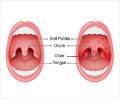Tests have confirmed a second outbreak of foot and mouth disease on a British farm near the first one, Environment Secretary Hilary Benn said Tuesday.
Tests have confirmed a second outbreak of foot and mouth disease on a British farm near the first one, Environment Secretary Hilary Benn said Tuesday.
The infected animals were found on a farm south of London within a protection zone set up around the first outbreak, which was confirmed on Friday."The chief veterinary officer will confirm shortly this morning that the tests that were done overnight on the samples taken from the animals culled does confirm foot and mouth," Benn told the BBC television.
The new outbreaks have triggered fears of a repeat of a 2001 foot and mouth epidemic which saw up to 10 million animals slaughtered and devastated Britain's farming industry.
After the first outbreak, near the village of Normandy in Surrey, some 120 cattle were slaughtered, of which three have so far found to be infected with foot and mouth.
Experts ordered a further 50 cattle to be culled in the second suspect case, which is also in the three kilometre (two mile) protection zone around the first outbreak.
Investigations into the source of the first outbreak have centred on the nearby Pirbright research centre, after tests found that the virus involved was similar to one made there.
"It shows that the arrangements that we have put in place in the protection and surveillance zones have worked to identify this further outbreak in view of this new development," he said.
"They noticed yesterday clinical signs of foot and mouth in the animals. A swift decision was taken to cull them, the tests were done overnight.
"It is within the protection zone, and it shows the continuing need for vigilance."
Source-AFP
LIN/J
 MEDINDIA
MEDINDIA
 Email
Email







